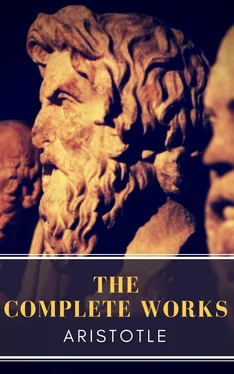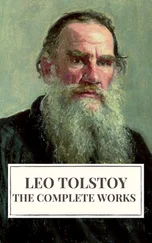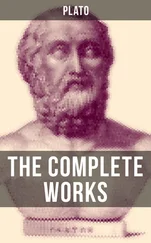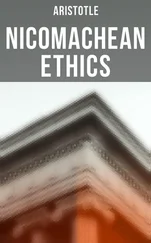Aristotle Aristotle - Aristotle - The Complete Works
Здесь есть возможность читать онлайн «Aristotle Aristotle - Aristotle - The Complete Works» — ознакомительный отрывок электронной книги совершенно бесплатно, а после прочтения отрывка купить полную версию. В некоторых случаях можно слушать аудио, скачать через торрент в формате fb2 и присутствует краткое содержание. Жанр: unrecognised, на английском языке. Описание произведения, (предисловие) а так же отзывы посетителей доступны на портале библиотеки ЛибКат.
- Название:Aristotle: The Complete Works
- Автор:
- Жанр:
- Год:неизвестен
- ISBN:нет данных
- Рейтинг книги:3 / 5. Голосов: 1
-
Избранное:Добавить в избранное
- Отзывы:
-
Ваша оценка:
- 60
- 1
- 2
- 3
- 4
- 5
Aristotle: The Complete Works: краткое содержание, описание и аннотация
Предлагаем к чтению аннотацию, описание, краткое содержание или предисловие (зависит от того, что написал сам автор книги «Aristotle: The Complete Works»). Если вы не нашли необходимую информацию о книге — напишите в комментариях, мы постараемся отыскать её.
This edition has been professionally formatted and contains several tables of contents. The first table of contents (at the very beginning of the ebook) lists the titles of all novels included in this volume. By clicking on one of those titles you will be redirected to the beginning of that work, where you'll find a new TOC that lists all the chapters and sub-chapters of that specific work.
Aristotle: The Complete Works — читать онлайн ознакомительный отрывок
Ниже представлен текст книги, разбитый по страницам. Система сохранения места последней прочитанной страницы, позволяет с удобством читать онлайн бесплатно книгу «Aristotle: The Complete Works», без необходимости каждый раз заново искать на чём Вы остановились. Поставьте закладку, и сможете в любой момент перейти на страницу, на которой закончили чтение.
Интервал:
Закладка:
Many other arguments are brought to a conclusion by the help of an hypothesis; these we ought to consider and mark out clearly. We shall describe in the sequel their differences, and the various ways in which hypothetical arguments are formed: but at present this much must be clear, that it is not possible to resolve such arguments into the figures. And we have explained the reason.
45
Whatever problems are proved in more than one figure, if they have been established in one figure by syllogism, can be reduced to another figure, e.g. a negative syllogism in the first figure can be reduced to the second, and a syllogism in the middle figure to the first, not all however but some only. The point will be clear in the sequel. If A belongs to no B, and B to all C, then A belongs to no C. Thus the first figure; but if the negative statement is converted, we shall have the middle figure. For B belongs to no A, and to all C. Similarly if the syllogism is not universal but particular, e.g. if A belongs to no B, and B to some C. Convert the negative statement and you will have the middle figure.
The universal syllogisms in the second figure can be reduced to the first, but only one of the two particular syllogisms. Let A belong to no B and to all C. Convert the negative statement, and you will have the first figure. For B will belong to no A and A to all C. But if the affirmative statement concerns B, and the negative C, C must be made first term. For C belongs to no A, and A to all B: therefore C belongs to no B. B then belongs to no C: for the negative statement is convertible.
But if the syllogism is particular, whenever the negative statement concerns the major extreme, reduction to the first figure will be possible, e.g. if A belongs to no B and to some C: convert the negative statement and you will have the first figure. For B will belong to no A and A to some C. But when the affirmative statement concerns the major extreme, no resolution will be possible, e.g. if A belongs to all B, but not to all C: for the statement AB does not admit of conversion, nor would there be a syllogism if it did.
Again syllogisms in the third figure cannot all be resolved into the first, though all syllogisms in the first figure can be resolved into the third. Let A belong to all B and B to some C. Since the particular affirmative is convertible, C will belong to some B: but A belonged to all B: so that the third figure is formed. Similarly if the syllogism is negative: for the particular affirmative is convertible: therefore A will belong to no B, and to some C.
Of the syllogisms in the last figure one only cannot be resolved into the first, viz. when the negative statement is not universal: all the rest can be resolved. Let A and B be affirmed of all C: then C can be converted partially with either A or B: C then belongs to some B. Consequently we shall get the first figure, if A belongs to all C, and C to some of the Bs. If A belongs to all C and B to some C, the argument is the same: for B is convertible in reference to C. But if B belongs to all C and A to some C, the first term must be B: for B belongs to all C, and C to some A, therefore B belongs to some A. But since the particular statement is convertible, A will belong to some B. If the syllogism is negative, when the terms are universal we must take them in a similar way. Let B belong to all C, and A to no C: then C will belong to some B, and A to no C; and so C will be middle term. Similarly if the negative statement is universal, the affirmative particular: for A will belong to no C, and C to some of the Bs. But if the negative statement is particular, no resolution will be possible, e.g. if B belongs to all C, and A not belong to some C: convert the statement BC and both premisses will be particular.
It is clear that in order to resolve the figures into one another the premiss which concerns the minor extreme must be converted in both the figures: for when this premiss is altered, the transition to the other figure is made.
One of the syllogisms in the middle figure can, the other cannot, be resolved into the third figure. Whenever the universal statement is negative, resolution is possible. For if A belongs to no B and to some C, both B and C alike are convertible in relation to A, so that B belongs to no A and C to some A. A therefore is middle term. But when A belongs to all B, and not to some C, resolution will not be possible: for neither of the premisses is universal after conversion.
Syllogisms in the third figure can be resolved into the middle figure, whenever the negative statement is universal, e.g. if A belongs to no C, and B to some or all C. For C then will belong to no A and to some B. But if the negative statement is particular, no resolution will be possible: for the particular negative does not admit of conversion.
It is clear then that the same syllogisms cannot be resolved in these figures which could not be resolved into the first figure, and that when syllogisms are reduced to the first figure these alone are confirmed by reduction to what is impossible.
It is clear from what we have said how we ought to reduce syllogisms, and that the figures may be resolved into one another.
46
In establishing or refuting, it makes some difference whether we suppose the expressions ‘not to be this’ and ‘to be not-this’ are identical or different in meaning, e.g. ‘not to be white’ and ‘to be not-white’. For they do not mean the same thing, nor is ‘to be not-white’ the negation of ‘to be white’, but ‘not to be white’. The reason for this is as follows. The relation of ‘he can walk’ to ‘he can not-walk’ is similar to the relation of ‘it is white’ to ‘it is not-white’; so is that of ‘he knows what is good’ to ‘he knows what is not-good’. For there is no difference between the expressions ‘he knows what is good’ and ‘he is knowing what is good’, or ‘he can walk’ and ‘he is able to walk’: therefore there is no difference between their contraries ‘he cannot walk’-’he is not able to walk’. If then ‘he is not able to walk’ means the same as ‘he is able not to walk’, capacity to walk and incapacity to walk will belong at the same time to the same person (for the same man can both walk and not-walk, and is possessed of knowledge of what is good and of what is not-good), but an affirmation and a denial which are opposed to one another do not belong at the same time to the same thing. As then ‘not to know what is good’ is not the same as ‘to know what is not good’, so ‘to be not-good’ is not the same as ‘not to be good’. For when two pairs correspond, if the one pair are different from one another, the other pair also must be different. Nor is ‘to be not-equal’ the same as ‘not to be equal’: for there is something underlying the one, viz. that which is not-equal, and this is the unequal, but there is nothing underlying the other. Wherefore not everything is either equal or unequal, but everything is equal or is not equal. Further the expressions ‘it is a not-white log’ and ‘it is not a white log’ do not imply one another’s truth. For if ‘it is a not-white log’, it must be a log: but that which is not a white log need not be a log at all. Therefore it is clear that ‘it is not-good’ is not the denial of ‘it is good’. If then every single statement may truly be said to be either an affirmation or a negation, if it is not a negation clearly it must in a sense be an affirmation. But every affirmation has a corresponding negation. The negation then of ‘it is not-good’ is ‘it is not not-good’. The relation of these statements to one another is as follows. Let A stand for ‘to be good’, B for ‘not to be good’, let C stand for ‘to be not-good’ and be placed under B, and let D stand for not to be not-good’ and be placed under A. Then either A or B will belong to everything, but they will never belong to the same thing; and either C or D will belong to everything, but they will never belong to the same thing. And B must belong to everything to which C belongs. For if it is true to say ‘it is a not-white’, it is true also to say ‘it is not white’: for it is impossible that a thing should simultaneously be white and be not-white, or be a not-white log and be a white log; consequently if the affirmation does not belong, the denial must belong. But C does not always belong to B: for what is not a log at all, cannot be a not-white log either. On the other hand D belongs to everything to which A belongs. For either C or D belongs to everything to which A belongs. But since a thing cannot be simultaneously not-white and white, D must belong to everything to which A belongs. For of that which is white it is true to say that it is not not-white. But A is not true of all D. For of that which is not a log at all it is not true to say A, viz. that it is a white log. Consequently D is true, but A is not true, i.e. that it is a white log. It is clear also that A and C cannot together belong to the same thing, and that B and D may possibly belong to the same thing.
Читать дальшеИнтервал:
Закладка:
Похожие книги на «Aristotle: The Complete Works»
Представляем Вашему вниманию похожие книги на «Aristotle: The Complete Works» списком для выбора. Мы отобрали схожую по названию и смыслу литературу в надежде предоставить читателям больше вариантов отыскать новые, интересные, ещё непрочитанные произведения.
Обсуждение, отзывы о книге «Aristotle: The Complete Works» и просто собственные мнения читателей. Оставьте ваши комментарии, напишите, что Вы думаете о произведении, его смысле или главных героях. Укажите что конкретно понравилось, а что нет, и почему Вы так считаете.












